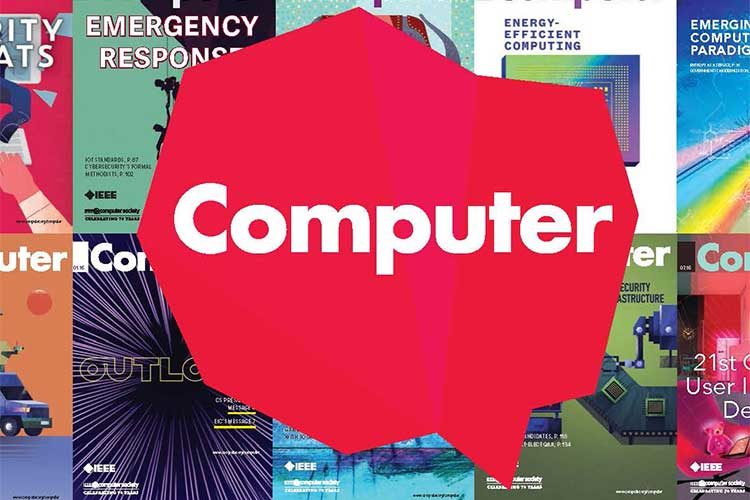Abstracts (co-1018@computer.org): CLOSED
Full papers: CLOSED
Publication date: October 2018
Computer plans an October 2018 special issue on resiliency in cyber-physical systems.
Modern cyber-physical systems (CPSs) feature a tight integration of physical, computation, and communication processes. In the last decade, there’s been a rapid growth of research into and deployment of CPSs in applications in areas such as automation, energy, security, healthcare, manufacturing, transportation, and infrastructure design. The technology is being used in industrial systems, sensor networks, medical devices, smart buildings, and autonomous and robotic systems.
Resilience—defined as a system’s ability to anticipate, resist, recover from, and reconfigure after cyberattacks, failures, and disturbances—is imperative for CFPs. To ensure resiliency, we need multidisciplinary approaches to provide state awareness, intelligence, control, safety, security, effective human-system interaction, robust communications, and reliable computation and operation.
This special issue will address the applications; architectures; development methodologies; and safety, security, and reliability approaches necessary to enable CPS resiliency. The guest editors seek article topics that include, but aren’t limited to, the following:
- CPS security, privacy, and trust
- CPS fault-tolerant techniques
- supervisory control and complex-systems performance
- cyberarchitecture health indicators and defense optimization
- CPS real-time communications, protection, control, resilience, reliability, sustainability, and efficiency
- autonomous and semi-autonomous systems: failure/error tolerance and recovery, adaptable and flexible architectures, multilevel agent systems, multisensor fusion, tele-presence, probabilistic behaviors, performance validation and verification, and communications security
- threats and failures: jamming, interference, frame and bit errors, data loss, cyberphysical security, human error, malicious attacks, disasters, situational awareness, and diagnosis
- recovery: intrusion detection systems, intrusion tolerance, resilience metrics, resilience strategies, policy-based management, real-time remediation, machine learning and recovery strategies, and future network-resilience management architectures and mechanisms.
- adaptive/agile/moving defenses: moving-target defense technologies, adaptive approaches, agile responses, evaluation metrics, visualization abilities, and command-and-control capabilities
- characterization: diversity, security, risk management, reliability, recovery, interoperability, fault tolerance, trust, latency, survivability, quality of service, disruption tolerance, complexity, and adaptability
- human-machine interaction and systems behavior: behavior modeling, attacker co-evolution, and deception
- education and workforce development: training for operators and incident responders, building a talent pipeline, simulation environments, and training tools
Only submissions that describe previously unpublished, original, state-of-the-art research and that aren’t currently under review by a conference or journal will be considered. Extended journal versions of conference papers must be at least 30 percent different from the original conference works.
There is a strict 6,000-word limit (figures and tables are equivalent to 300 words each) for final manuscripts. Authors should be aware that Computer cannot accept or process papers that exceed this word limit.
Articles should be understandable by a broad audience of computer science and engineering professionals, avoiding a focus on theory, mathematics, jargon, and abstract concepts.
All manuscripts are subject to peer review on both technical merit and relevance to Computer’s readership. Accepted papers will be professionally edited for content and style. For accepted papers, authors will be required to provide electronic files for each figure according to the following guidelines: for graphs and charts, authors must submit them in their original editable source format (PDF, Visio, Excel, Word, PowerPoint, etc.); for screenshots or photographs, authors must submit high-resolution files (300 dpi or higher at the largest possible dimensions) in JPEG or TIFF formats.
Authors of accepted papers are encouraged to submit multimedia, such as a 2- to 4-minute podcast, videos, or an audio or audio/video interview of the authors by an expert in the field, which Computer staff can help facilitate, record, and edit.
Questions?
Please direct any correspondence before submission to the guest editors:
- Oleg Sokolsky, University of Pennsylvania (sokolsky@cis.upenn.edu)
- Nicola Bezzo, University of Virginia (nbezzo@virginia.edu)
For author guidelines and information on how to submit a manuscript electronically, visit www.computer.org/web/peer-review/magazines. For full paper submission, please visit mc.manuscriptcentral.com/com-cs.


